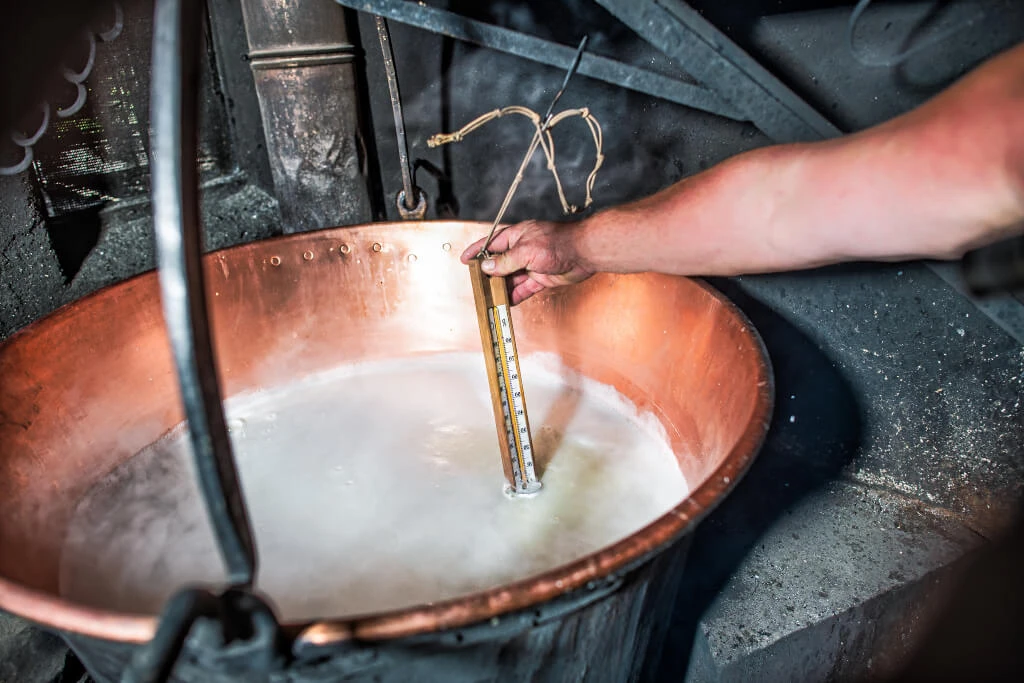Whisky is aged for a long time to develop its signature aroma and nuanced flavor. Whisky investors and connoisseurs have long held to this belief, respecting the long aging time required to turn raw spirits into liquid wealth. Distillers that think that shortening the maturing time of whisky is not only conceivable, but the future of the business, are at the forefront of a wave of innovation that challenges traditional thinking in the whisky production environment.
The Typical Ageing Procedure
Maturation of whisky involves more than just time. It’s a painstaking procedure where the alcohol bonds with the cask’s wood. Whisky is aged to produce more nuanced flavors, hues, and scents by absorbing chemicals from the oak, such as tannins and lignins. The maturing process is affected by many factors, including the type of wood used, the size of the barrel, the temperature, the humidity, and even the position of the cask inside the warehouse. The minimum age for a conventional Scotch is three years, while many high-end whiskies are matured for much longer than that.
Accelerated Ageing
Bryan Davis and other American pioneers think technology can replicate and improve upon human effort. They claim that the aging process can be sped up through environmental manipulation (including the use of heat, light, sound, pressure, and even microscopic wood fragments).
Davis’s approach is especially fascinating. He was motivated to find a way to replicate the molecular signature of old spirits after observing sunlight’s effect on aging wood. This discovery has paved the way for a brand new era in whisky manufacturing, making it possible to mimic the effects of decades of aging in a matter of days.
‘Micro maturation’ has previously been implemented at Ailsa Bay in Scotland. After spending several years in standard barrels, the bourbon is given a quick blast of intensive maturation in small Hudson Baby Bourbon casks for 6-9 months. It’s not as fast as Davis’s method, but it shows that people in the Scotch industry are open to trying new things. Now that we have looked at what exactly accelerated aging is, let’s compare the different maturation methods and how exactly they are different from one another:
Traditional Maturation Methods
- Time: Traditional maturation relies on the slow passage of time, often ranging from a minimum of three years to several decades.
- Cask Interaction: The spirit interacts with the cask, absorbing compounds that contribute to flavor, color, and aroma. The type, size, and previous use of the cask all play a significant role.
- Environmental Factors: Temperature, humidity, and warehouse position are critical, as they affect how the spirit interacts with the cask.
- Natural Chemical Reactions: Complex reactions occur gradually, allowing flavors and aromas to develop subtly and intricately.
- Legal Definition: Traditional maturation adheres to specific regulations that define the product as whisky.
Innovative Accelerated Maturation Methods
- Time: Accelerated maturation dramatically shortens the aging process, ranging from a few days to a few months.
- Controlled Interaction: Factors like heat, light, sound, pressure, and even the application of tiny wood fragments are manipulated to fast-track the aging process.
- Scientific Manipulation: Rather than relying on the natural environment, innovative methods use controlled, scientifically-created environments to achieve desired outcomes.
- Artificial Chemical Reactions: The use of amplified light and patented reactors can mimic and hasten the natural chemical reactions that occur over time.
- Legal Controversy: The legality of labeling the product as whisky is challenged, as it does not meet the traditional definitions in places like Scotland.
Why These Methods Are Vastly Different
- Philosophy: Traditional maturation honors the patience and subtlety of time, whereas accelerated methods embrace efficiency and technological intervention.
- Flavor Development: Traditional methods allow for a gradual, nuanced evolution of flavors, while accelerated methods can achieve similar chemical compositions but may lack intricate subtlety.
- Legal and Cultural Acceptance: Traditional methods are ingrained in the legal and cultural fabric of whisky production, especially in regions like Scotland. In contrast, innovative methods face legal challenges and skepticism from purists within the industry.
Disagreement and Worries
Some people aren’t thrilled by the prospect of speedy maturation. Concerns have been voiced by Scotch Whisky Association legal director Alan Park and InchDairnie Distillery’s Ian Palmer. They contend that the complex and nuanced reactions that take place during natural development cannot be recreated by artificial techniques.
This raises the question of whether or not a spirit aged faster than usual can be called whisky. The existing rules say “no,” at least not when it comes to Scotch. The Scotch business has long made it plain that they consider the traditional method to be a defining characteristic of their product.
Finding the Sweet Spot Between History and the Future

Proponents of accelerated aging, such as Tom Lix, founder of Cleveland Whisky, believe these techniques have a promising future despite widespread skepticism. They see a need for traditional-aged spirits and their market, but also for excellent, affordable products that can be made more swiftly.
The debate over whether or not whisky maturation should be accelerated illustrates a conflict between long-held traditions and the promising new avenues of research opened up by modern science. The industry is struggling to figure out how to use new technologies without diluting the distinctive qualities that make whisky so popular.
The search for ways to speed up the aging of whisky comes at a time when efficiency is typically prioritized over tradition. The whisky business may be able to appease traditionalists and futurists both by striking a balance between the two extremes of preserving tradition and embracing innovation.
Whether accelerated aging becomes commonplace, the debate it has sparked is illuminating the tension between tradition and innovation more generally. This exchange will undoubtedly continue for some time, adding additional dimensions to the already complex whisky culture.

